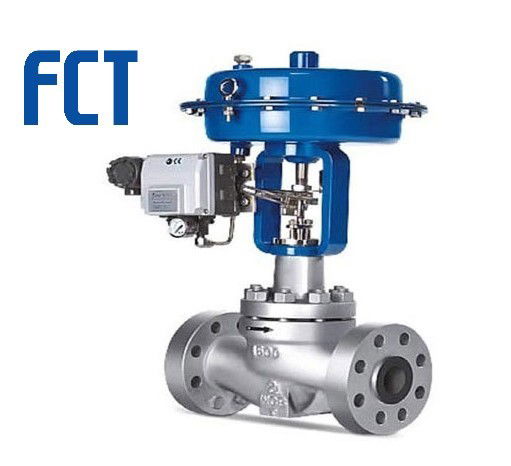
Maximize Energy Financial Savings and Convenience With Advanced Structure Automation Controls
In the world of modern style and facility monitoring, the assimilation of advanced building automation regulates stands as a critical development. By utilizing the power of automation, structures can adapt, respond, and evolve in means that were as soon as unbelievable.
Energy Effectiveness Perks
Energy performance benefits can dramatically decrease power usage and functional expenses in buildings. By carrying out energy-efficient techniques and modern technologies, building proprietors and operators can accomplish considerable cost savings while also contributing to environmental sustainability. Among the main advantages of enhancing power effectiveness in buildings is the reduction of energy bills. Energy-efficient systems, such as innovative structure automation controls, can enhance using sources like home heating, lights, and air conditioning, leading to reduced power costs gradually.
Moreover, enhanced power effectiveness can lengthen the life expectancy of building equipment and systems. By running more effectively, heating and cooling systems, lighting fixture, and other building components experience less damage, causing minimized upkeep and substitute expenses. Furthermore, energy-efficient structures frequently regulate greater residential property worths and rental rates, offering long-lasting economic benefits to proprietors.
Moreover, energy performance can boost resident comfort and performance. Properly controlled indoor settings with optimal lighting and thermal conditions develop an even more conducive and enjoyable work space, causing enhanced staff member contentment and efficiency. In general, the energy performance benefits connected with innovative building automation controls are multifaceted, encompassing price financial savings, environmental stewardship, and passenger wellness.
Improved Comfort Control
Enhancing comfort control in building settings calls for an advanced integration of sophisticated automation systems for ideal passenger health. By using sophisticated structure automation controls, centers can customize the indoor atmosphere to satisfy the particular demands and preferences of occupants. control valves.
By integrating these innovative controls, buildings can not just enhance comfort however also enhance power performance by optimizing system operations based on actual occupancy and use patterns. Ultimately, prioritizing resident comfort via innovative automation systems leads to an extra delightful and much healthier interior atmosphere.
Functional Effectiveness Improvements

Moreover, the application of real-time surveillance and analytics tools makes it possible for building drivers to recognize power inadequacies and operational abnormalities promptly. By constantly keeping an eye on power usage patterns and system efficiency metrics, adjustments can be made in real-time to enhance power usage and make certain peak operational performance. control valves. Additionally, including demand response methods into structure automation controls can better enhance functional performance by dynamically adjusting energy use based upon grid problems and rates signals
Indoor Climate Optimization
Reliable interior climate optimization is a fundamental aspect of building automation controls, making certain occupants' comfort and health while taking full advantage of power cost savings. see page By making use of advanced sensors and controls, building automation systems can continuously change and keep track of temperature, humidity levels, air high quality, and ventilation to produce an ideal indoor atmosphere. Keeping regular and comfortable problems not just improves passenger contentment but likewise enhances performance and total health.
Interior climate optimization also plays a vital function in energy efficiency. By fine-tuning air conditioning, heating, and ventilation systems based upon real-time data and tenancy patterns, building automation controls can considerably decrease energy intake - control valves. Executing approaches such as demand-controlled ventilation and thermal zoning can help decrease energy waste while making certain that each area of the building gets the needed conditioning.

Lasting Setting Production
Structure automation regulates not only maximize interior climate you could look here problems for energy performance and occupant comfort however also lay the foundation for creating a lasting atmosphere through critical monitoring of systems and sources. By incorporating sophisticated structure automation technologies, such as sensors, actuators, and smart software program, centers can readjust and keep an eye on energy use in real-time to minimize waste and decrease their carbon impact. These systems enable predictive upkeep, recognizing prospective issues prior to they escalate and optimizing equipment performance to boost longevity and performance.
In addition, lasting environment production expands past energy monitoring to incorporate water preservation, waste reduction, and indoor air top quality improvement. Structure automation controls can regulate water use, discover leakages, and ensure correct garbage disposal techniques, adding to total sustainability initiatives. Additionally, by checking and managing air flow and filtration systems, these technologies improve passenger health and wellness and productivity while lowering energy usage linked with HVAC procedures.
Verdict
To conclude, advanced structure automation manages deal substantial benefits in terms of power cost savings, comfort control, functional effectiveness, indoor climate optimization, and developing a lasting atmosphere. By executing these controls, structures can accomplish optimum efficiency while minimizing power usage and enhancing passenger convenience. It is obvious that using innovative automation innovation is critical in improving building performance and developing a much more lasting future.
Power performance advantages can substantially lower energy usage and functional costs in buildings. In general, the power efficiency benefits linked with innovative structure automation controls are complex, encompassing expense financial savings, environmental stewardship, and owner health.
In addition, incorporating need action strategies right into structure automation controls can further improve functional performance by dynamically readjusting power use based on grid conditions and pricing signals.
Structure automation controls not just maximize indoor environment problems for energy effectiveness and resident comfort however additionally Visit Your URL lay the foundation for producing a lasting environment through calculated management of sources and systems.In verdict, advanced structure automation regulates offer considerable benefits in terms of energy cost savings, comfort control, functional performance, interior climate optimization, and producing a sustainable atmosphere.